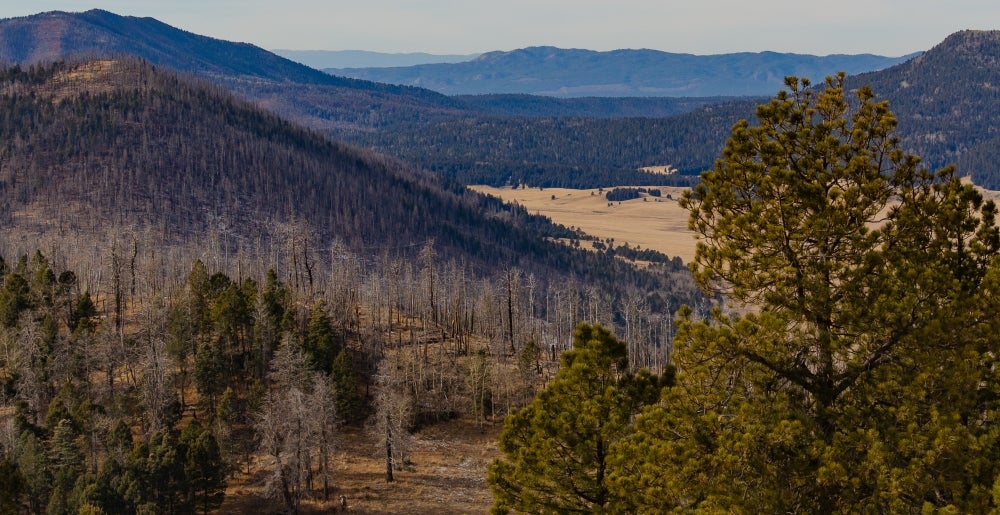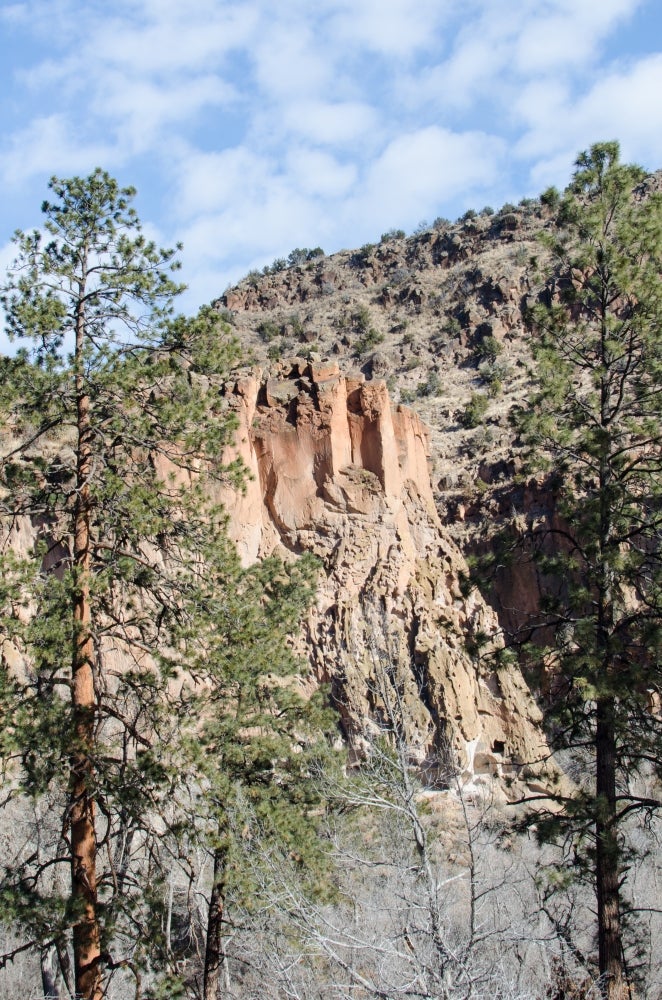
A Risky Climate Investment

Given the tremendous ability of forests to absorb carbon dioxide from the atmosphere, some governments want to plant forests to offset greenhouse gas emissions — a sort of climate investment. But if a forest goes bust, researchers say, much of that stored carbon could go up in smoke.
UC Santa Barbara terrestrial scientist Anna Trugman and her colleagues realized that we can’t simply deploy forests in the fight against climate change. “We found that there is a real need to better understand how much risk forests face due to climate-change driven mortality factors like fire, insect outbreaks and drought,” Trugman said, “before we can ensure how appropriate forest carbon storage projects are to meet ambitious aims for mitigating climate change.”
Last year, Trugman and her colleagues William Anderegg and Grayson Badgley, at University of Utah, organized a workshop to assemble some of the foremost experts on climate change risks to forests. The diverse group represented various disciplines: law, economics, science and public policy, among others. “This was designed to bring some of the people who had thought about this the most together and to start talking and come up with a roadmap,” Anderegg said.
Part of that roadmap is a study now published in the journal Science, which calls attention to the risks forests face from myriad consequences of rising global temperatures, including fire, drought, insect damage and human disturbance. It is a call to action to bridge the divide between the data and models produced by scientists and the actions taken by policymakers.
Forests absorb a significant amount of the carbon dioxide that’s emitted into the atmosphere — just under a third, Anderegg said. “And this sponge for CO2 is incredibly valuable to us.”
Because of this, governments in many countries are looking to forest-based natural climate solutions that include preventing deforestation, managing natural forests and reforesting degraded lands. Forests could present some of the more cost-effective climate mitigation strategies, with benefits for biodiversity, conservation and local communities.

Forests have been decimated by fires and bark beetles in northern New Mexico.
Photo Credit: CURT DVONCH
But built into this approach is the idea that forests are able to store carbon relatively permanently, on time scales of 50 to 100 years, or longer. “However, events like droughts, fires and insect attacks can release the carbon stored in trees back into the atmosphere,” Trugman remarked, “reversing the effect of the forest as a carbon sponge.”
Forests have long been vulnerable to all of these factors, yet able to recover from them when they are episodic or come one at a time. Unfortunately, the risks connected with climate change, including drought and fire, increase over time. Simultaneous or consecutive threats leave forests insufficient time to recover, and can kill the trees, release the carbon and undermine the entire premise of forest-based natural climate solutions.
This is particularly relevant to policies in California. “The state has a forest carbon offset program,” Trugman noted, “and, as many residents know, California is extremely prone to forest loss through fire, insect attack and drought.” What’s more, the increased loss of forest cover due to climate change is not currently factored into the state’s program.
Scientists have also discovered that not all trees or locations are equal in terms of their effect on climate change. For instance, trees planted at high latitudes tend to have a net warming effect on the planet. “At higher latitudes, the dark tree color actually increases the amount of energy the Earth absorbs from the sun,” Trugman said, “which outweighs the effects of the CO2 they pull out of the atmosphere.”
Compounding these challenges is the fact that forests take decades to centuries to grow, far too long to wait as climate change bears down upon our world. Bottom line: Forest carbon offsets must be incorporated into a diverse portfolio of climate change solutions. “It’s just too risky to count on forests alone as our carbon reservoir,” Trugman said.
Trugman and her colleagues encouraged scientists to be more attentive to assessing forest climate risks and to share the best of their data and predictive models with policymakers. Only this, they said, will enable climate strategies that include forests to have the greatest long-term impacts. For example, the cutting-edge climate risk models that scientists employ currently aren’t widely used outside of academia. As a result, policy decisions can rely on science that may be decades old.
“Without good science to tell us what those risks are,” Anderegg said, “we’re flying blind and not making the best policy decisions.
“There are at least two key things you can do with this information,” he added. The first is to optimize investment in forests and minimize risks. “Science can guide and inform where we ought to be investing to achieve different climate aims and avoid risks.”
The second is to mitigate risks through forest management. “If we’re worried about fire as a major risk in a certain area, we can start to think about what are the management tools that make a forest more resilient to that disturbance,” he said.
“We view this paper as an urgent call to both policymakers and the scientific community to study this more, and to improve in sharing tools and information across different groups.”



